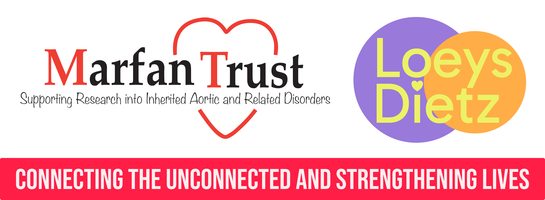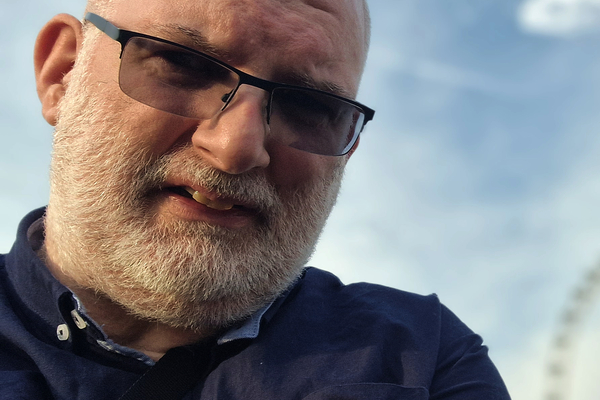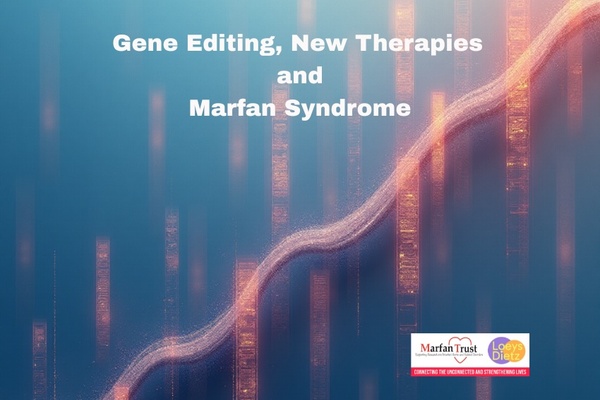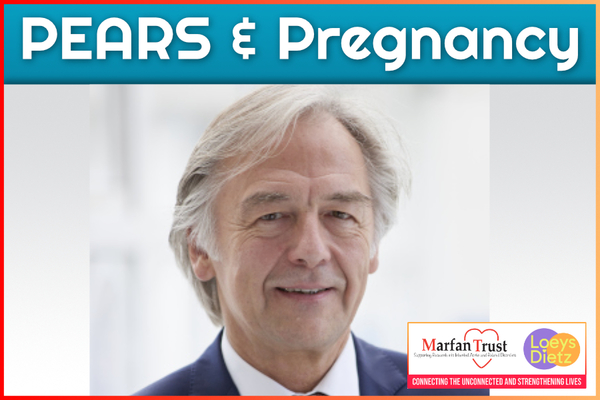Genes explain our past and influence our future. A genetic discovery in 1991 was the catalyst for change in the diagnosis and treatment of Marfan syndrome, allowing a deeper understanding of the condition, speeding up medical discoveries and facilitating a new, personalised medical approach. The Marfan Trust has more than played its part. The future is bright!
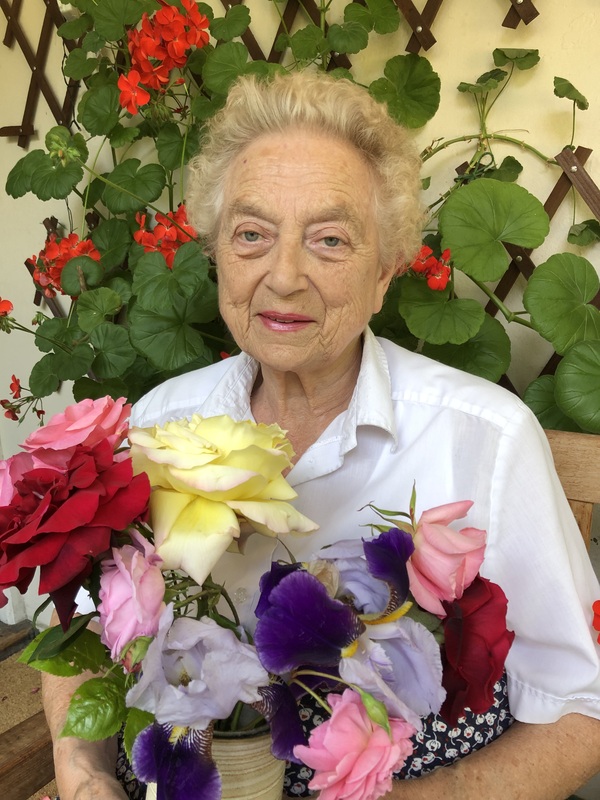
THE DISCOVERY by Angus McCrone
Chance request from patient accelerated discovery of the Marfan gene ....
Dr Anne Child, the Marfan Trust’s medical director, was one of the key researchers involved in the international quest just over 30 years ago to find the gene responsible for Marfan Syndrome.
Toronto-born Anne became a specialist in clinical genetics in the 1980s based in Montreal and then London. Here she describes the sequence of events that led to her becoming co-discoverer of the Marfan gene in 1991:
“In the late Eighties, I was doing clinical genetics at Guy’s Hospital, and a young man came in one day. He had Marfan Syndrome and had just got married. He said he wanted to have children, but he didn’t want them to have Marfan. Could I help?
“I said ‘I’m very sorry, we don’t know the cause. We need to know that before we test the baby.’ That evening, I recounted this to my husband and said that I hadn’t been much help. He replied: ‘Why don’t you find the cause?’
“So I went to my professor, who said I should write a grant proposal and put it to the British Heart Foundation. That led to the establishment of a research consortium to investigate the genetic cause, and it made use of a database of all the relevant patients at Guy’s. At a conference at Harvard in the US, I literally stopped the experts one-by-one and asked them if they had any families with Marfan. We all took blood samples from families with Marfan, and studied them.
“Once the affected gene was found, it fitted all the cases. It was fibrillin 1 on chromosome 15. We were helped by a study of a big, extended family in the Kentucky mountains, where all had Marfan Syndrome. Meanwhile, a group in Paris that was working with us discovered that there could be a number of different errors in the same gene.
“It’s a very long gene, like a train with 65 carriages, and we found that some Marfan patients had an error in carriage 2, for example, and some in carriage 62, some in 65. The most severe cases, the neo-natal Marfan patients, had errors in numbers 24 to 32.”
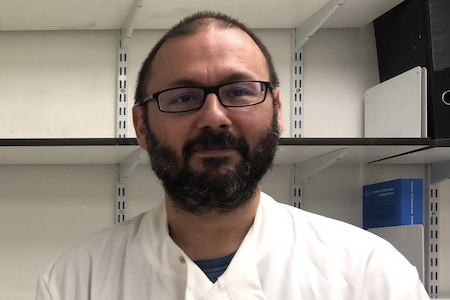
THE FUTURE FOR MARFAN SYNDROME by Angus McCrone
Future is looking brighter for Marfan sufferers, say experts ...
Families with connective tissue disorders such as Marfan Syndrome have more hopeful prospects for the future than would have been the case in previous decades, thanks to new research.
Marfan and related conditions Ehlers-Danlos and Loeys-Dietz Syndromes can have negative effects on different parts of the body, including skeleton, eyes and heart, as well as raising the risk of life-threatening problems in the aorta.
However, research has been progressing fast since the discovery of the Marfan gene in 1991, and life expectancy for Marfan patients specifically has climbed – to mid-70s at the latest estimate – thanks to better diagnosis and more effective treatment. This progress looks set to continue.
Diagnosis
One of the most promising techniques for investigating inherited conditions is ‘whole genome sequencing’. It was only in 2008 that the first whole genome sequencing, or WGS, was completed for a human, but now this approach is starting to be widely used by medical researchers, including Dr Jose Antonio Aragon-Martin, director of the Sonalee Laboratory located at William Harvey Research Institute in Queen Mary University of London.
Jose and his colleagues are focussing on the genetic profile of conditions such as Marfan. “You can query every section of the DNA, and the technology is getting cheaper all the time,” he says.
“WGS is bringing better diagnoses of Marfan Syndrome and similar conditions. The good thing is that you can look at the ‘exons’ but also the ‘introns’. Exons are the DNA sections that code for proteins, and introns are those that do not. But introns are still important because they help with the creation of the proteins from a single gene.”
Dr Anne Child, medical director for the Marfan Trust, says: “The significance is that this technique can improve diagnostics and make it easier to treat aneurysms earlier. We have now found about 58 genes that can independently cause an ascending aortic aneurysm. They can be put into a screening panel, something that the NHS offers, and we can test the whole family. Whole genome sequencing makes sure that we don’t miss any errors.
“It also broadens our techniques for identifying mutations. Even after screening at Royal Brompton Hospital, some 70% of patients have no known cause of their condition. Jose has estimated that there must be about 70 genes left to discover [that can cause aortic aneurysms].”

Improved lives
Progress in the lab is changing the outlook for patients, in terms of their lifestyles, their future families and the possibilities for treatment.
Jose says: “Benefits from whole genome research include the advice that can be given to patients regarding lifestyle. If you know you have a particular variant, the advice will be not to do extreme exercise. But that may not be the appropriate guidance if the only indications you have are skeleton and eye. Lifestyle advice could be tailored according to the exact pattern in the genes. Of course, this advice should only be given by professionals.”
Anne adds that advances in genetic research mean “that we’ll be able to make sure that a Marfan patient can have children that are not affected. We can get rid of the gene from the family concerned using what we call ‘pre-implantation genetic diagnosis’, or PGD. This involves mixing egg and sperm in the lab and making tiny pre-embryos. At the eight-cell stage, you can take one cell and analyse it, testing for the mutation. You set aside a cell if it has got that mutation."
Then there is progress on medication. Getting this right for patients with Marfan and related conditions can lead to improved lifestyles and longer life expectancy. Drugs such as Irbesartan have been shown to help to maintain aorta strength. But that is just the start.
Anne says: “We are collaborating with Dr Sanjay Sinha at Cambridge University . He has been given access to a panel of about 70 medicines that have been approved for humans but so far do not fit any particular disease.
“Instead of having to plan a full clinical trial on patients with Marfan, it’s possible to take a skin sample and grow them, so that Dr Sinha can take those cultures, add his medicines and measure fibrillin production. If that is effective, it can then go to clinical trial. This is speeding up research immensely – previously, you would need trials lasting about seven years to test a drug like Irbesartan.
“We hope this will lead to new medicines to reduce the risk of aortic aneurysm. It is also possible that new treatments could have a positive effect on other indications of Marfan, such as skeletal and eye problems.”
Surgery
Research is leading to improved techniques when Marfan patients do actually need surgery, according to Anne Child.
“We had a patient called Tal Golesworthy, who is a design engineer. He thought the risk of operations on the aorta was too high, and so he designed a new operation in which you wrap the aorta from the outside to limit its growth, rather than having to cut the aorta to make a repair.
“We have five centres in England now that can do the operation, with Brompton as the number one location. Mortality risks from the operation are now down to 1%, and we can recommend this approach rather than the traditional type of surgery. That’s the fruit of 10 years’ work.
“Partly as a result of this, and of improved diagnosis and treatment, the average lifespan of a Marfan patient (excluding the neo-natal cases) has risen from 32 to 74 or 75. Early detection methods enable us to pick up family members when they are children, and echocardiograms, MRIs and CT scans give us an exact measure of the aortic wall. We can operate earlier because the risk is lower.”
